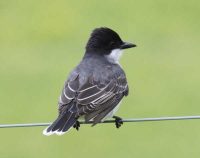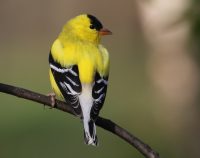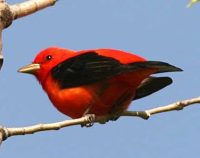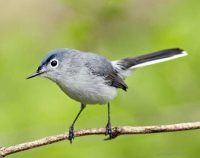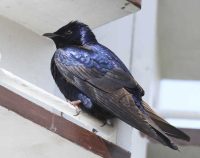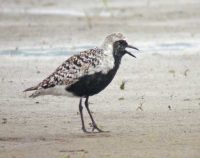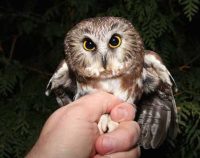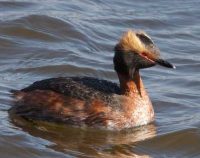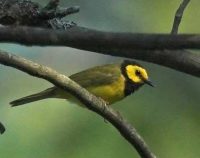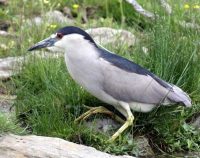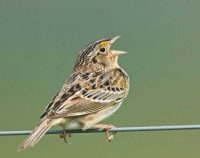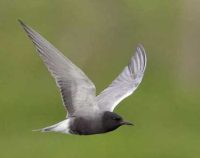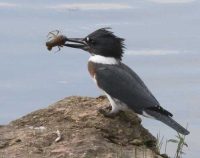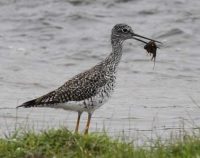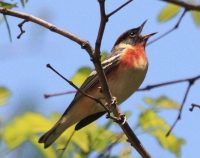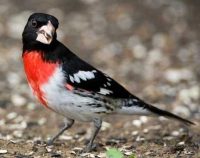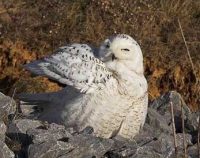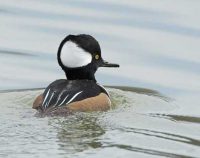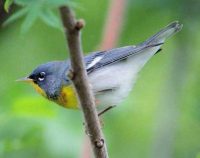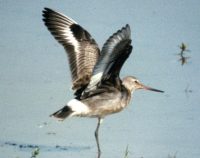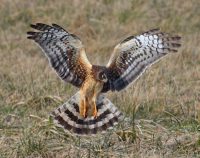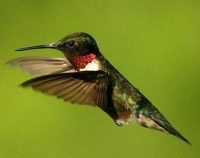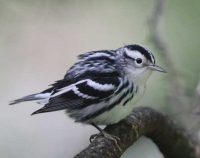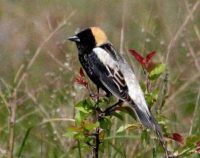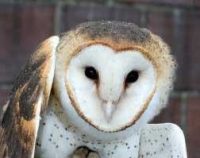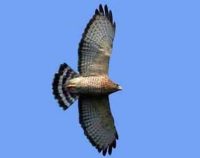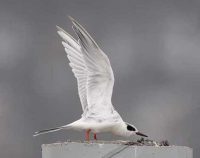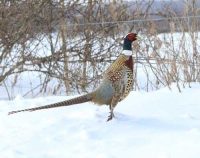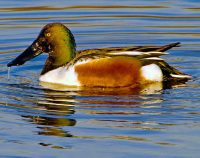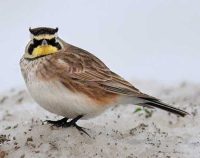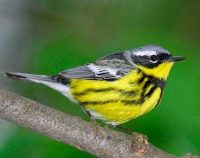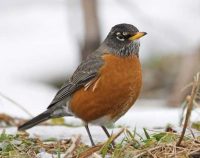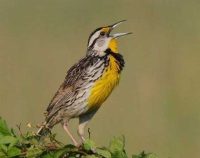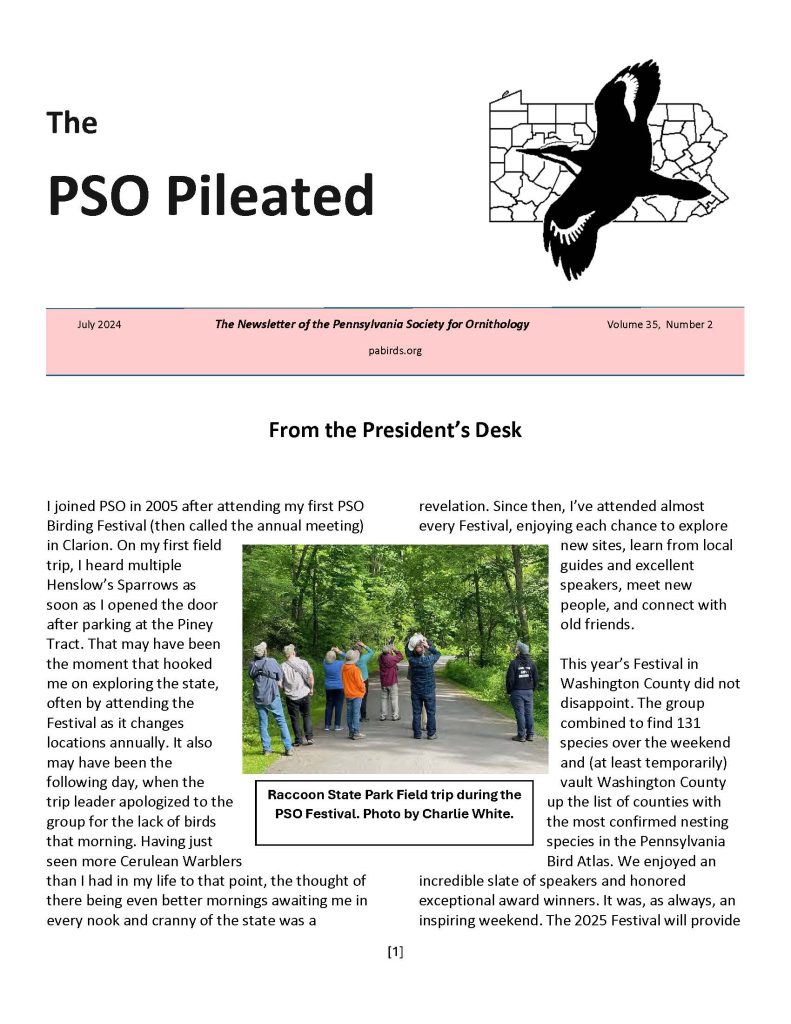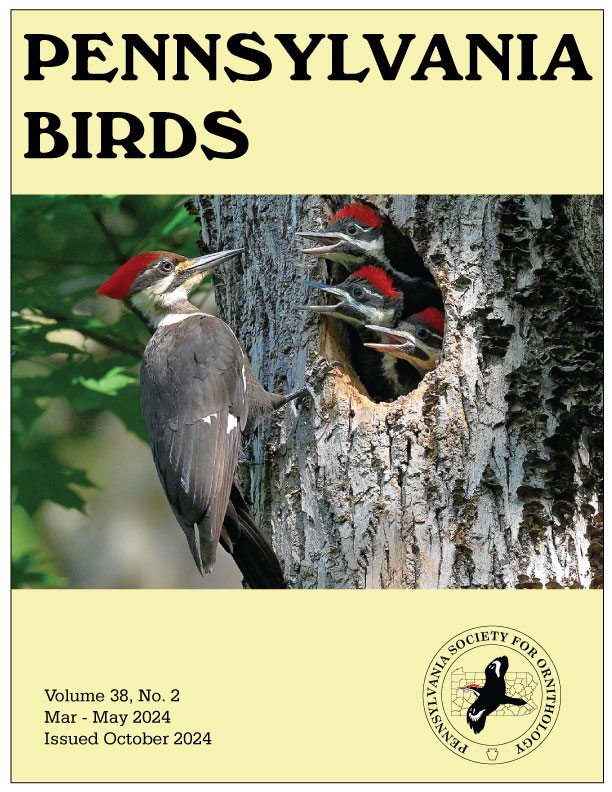Return to Conservation Award Page
Bartramian Audubon Society
The 2009 Conservation Award was presented to Bartramian Audubon Society President Kathie Goodblood at the PSO annual meeting in Morgantown. The Bartramian Audubon was founded by students of Slippery Rock University. It serves as both a bird club and conservation organization for the northwestern Pennsylvania counties of Butler, Lawrence, Mercer, and Venango. Specifically we honor Bartramian Audubon for its Wildlife, and Bird and Butterfly Sanctuary Programs. The programs qualify larger and smaller sights respectifully as sanctuaries, and commits the landowner to preserving their land as a nature preserve. Well over 100 sites have been qualified! The program and qualifying sights have been chronicled in Gene Wilhelms’s book titled Bartramian Audubon Society Sanctuaries, Including Important Bird Areas in the Eco-Region. For more details please refer below to the book review by Paul Hess.
In addition to the Sanctuary programs, Bartramian Audubon has several programs that provide nature and environmental programs to the community. Their “Audubon Adventures “ learning series provides programs to local classrooms, and a scholarship program provides support for sending teachers and students to the Audubon Summer Camp in Maine. Monthly meetings include educational programs and Bartramian Audubon has provided field trip and workshop support for the Oil Region Birds and Nature Festival.
For more on Bartramian Audubon please visit their website.
Inspiring Story of Conservation Bartramian Audubon Society Sanctuaries, Including Important Bird Areas in the Eco-Region. By Gene Wilhelm. xiv + 50 pp. Color photographs and maps. Order by check for $13.95 payable to Bartramian Audubon Society, c/o Dr. Gene Wilhelm, 513 Kelly Blvd., Slippery Rock, PA 16057-1145.
In 64 fact-filled pages, a new publication of the Bartramian Audubon Society (BAS) describes a remarkable quarter-century of volunteer conservation efforts and achievements in western Pennsylvania.
How many of us realized that these committed conservationists have fostered the designation and preservation of 40 large Wildlife Sanctuaries and 65 smaller Bird and Butterfly Sanctuaries in Butler, Lawrence, Mercer, and Venango Counties (as well as several in Elk and Erie Counties)? I didn’t know, and what a gratifying surprise it is to learn the story.
BAS became an official Audubon Chapter in 1983, and a major part of its mission from the outset has been to conserve ecological communities – particularly in habitats that harbor vulnerable, rare, threatened, and endangered life forms. Gene Wilhelm explains how the mission took a significant step forward in 1995 with a project “to encourage property owners to commit their land to nature and thus providing a natural preserve for wild native plants and animals.” BAS Wildlife Sanctuary status for a property usually requires at least 20 acres that contain biological diversity and other outstanding natural qualities. Further, the property owners must allow natural processes to continue unabated in perpetuity. Because of the Chapter’s efforts, a total of 3,845 acres are now being conserved in this way.
Two years later the BAS decided to extend its outreach by certifying Bird and Butterfly Sanctuaries for owners of less extensive properties. Wilhelm expresses the goal colorfully as aiming “to develop a natural system of mini-sanctuaries to help wildlife survive the battle of the bulldozer.” These sanctuaries, adding up to 338 acres, are as tiny as a tenth of an acre. It is easy to imagine how pleased the property owners are to participate in the conservation program.
There is still more to tell about the volunteers’ attention to habitat. A long-term strategy seeks to establish a series of natural riparian greenways – wildlife corridors that connect Audubon Important Bird Areas (IBAs): Goddard, McConnell’s Mill, and Moraine State Parks, Jennings Environmental Education Center, State Gamelands 95 (Glades), Barrows Heronry/Brucker Sanctuary, Shenango Reservoir, and Pennsy/ Black/Celery Swamps. Such corridors are increasingly recognized as important both to breeding birds and migrants. Wilhelm nicely summarizes the habitats and the important plants and animals in these eight IBAs monitored by the chapter.
The book not only contains Wilhelm’s detailed descriptions of the properties but also features many photographs of the sanctuaries’ habitats as well as fine maps by Sarah Sargent pinpointing the locations of protected sites. Especially notable is her cartographic illustration of the riparian corridor system, which would otherwise be impossible to visualize. An added attraction is a delightful poem by Linda Lenz, “A Summer Day,” capturing the animation and beauty of wildlife communities. Salutes are in order also to Melanie Petridis and Todd Stevenson for their 108 beautiful sanctuary signs, to Joanne Wilhelm, who proofread the manuscript perfectly as far as I can tell, and finally to the Butler Rotary Club for helping to defray the cost of printing.
Bartramian Audubon Society Sanctuaries is an eye-opening and inspiring little book, which points valuably to the Chapter’s name and purpose. The Bartramian Sandpiper, a bird we now call the Upland Sandpiper, is classified as Threatened in Pennsylvania. Birders always speak with sadness about how severely the species has dwindled here. What an appropriate name for a Chapter committed to conservation! If BAS had existed fifty years ago, this wonderful species might still be common in the Chapter’s counties.
–Paul Hess

